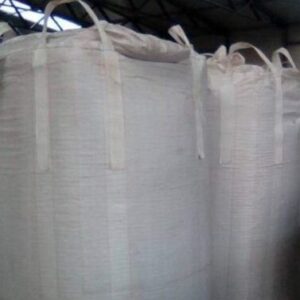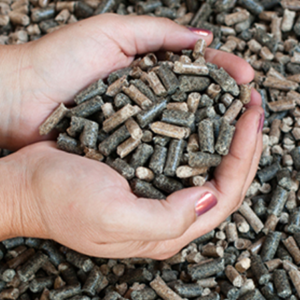Description
Description of wood pellets 6mm :
Wood pellets 6mm are a practical, economical and efficient way to heat a house or business with domestic and foreign fuels.
A1 wood pellets
diameter: 6 mm – 8 mm
Low dust content <1% High ash melting temperature> 1200 ° C
Made from the best virgin woods
Hardwood vs softwood wood pellets 6mm :
hardwoods such as maple, oak, birch and ash. And we all know that softwoods like pine, fir and spruce set.
European wood pellet
consumption : The majority of consumption, 61.8%, was for heat generation. Pellet consumption for heating can be further subdivided into three markets: residential heating (69%), commercial heating (19%) and CHP heating (12%). The remaining 38.2% of the wood pellets were used to generate electricity. It should be noted that the technologies for generating energy from pellets for heat, electricity or both are mature and offer efficient and reliable processes.
The advantages of wood pellets 6mm :
If you want to get a reliable source of heat, save money and help protect the environment, biomass wood pellets 6mm are a good choice. When the pellets burn, they release the same amount of carbon dioxide that the wood biomass absorbs as it grows, making them climate neutral.
An excellent pellet quality is essential for a constant and optimal heating process. Since there are different qualities of fuel, it is important for owners of stoves and boilers to choose the right quality fuel that best suits their systems.
The use of pellets for heat generation remained a strong industry in the EU. The use of pellets to generate electricity.
From heating to horse keeping: Wood pellets A1 used:
Our pellets are a small and compact product that overcomes some major challenges. You are a true force of nature. The size of a bottle cork, they are a high-energy, low-ash, low-moisture, and clean-burning heating source for wood pellet heating and boilers in large residential, commercial and industrial heating applications.
Our 6mm wood pellets are also a natural and convenient choice for horse bedding. They are highly absorbent, drastically reduce manure time, reduce the consumption of bed linen and are easy to store and transport.
Storage of wood pellets 6mm :
For an optimal lifespan, wood pellets should be stored indoors. A dehumidifier may be required in humid locations. When properly stored, pellets can be kept for over two years, but ideally within six months. At Wood Log Craft, we can store pellets outdoors due to our high turnover rate, so not a ton of pellets is left outdoors for more than a month or two.
Water destroys wood pellets. Wood pellet bags are not waterproof. Each bag contains small hair holes to allow the pellets to breathe. Particular care is required to avoid water absorption.
Wood pellets A1 from the pallet are supplied with a UV-resistant bag / hood that can be kept for up to 12 months. Do not remove the bag / hood until the pellets are used.
Acceptance of acceptance and storage of raw materials:
The product is carried out on the factory premises.
The raw material take-off point consists of concrete slabs.
A railroad feeder comes to the construction site that can be used for the delivery of raw materials. Access routes for trucks are also available.
The raw material storage location consists of a storage area and an area for the immediate raw material supply for processing.
The transport is unloaded by a timber loader based on the LIEBHERR A 924 В excavator.
Unloading takes place in storage areas or directly in the work area of the wood supply for processing.
The wood quality and quantity are accepted on site together with the radiological control.
Pellet fuels (or pellets) are biofuels made from compressed organic matter or biomass. Pellets can be made from one of five general categories of biomass: industrial waste and by-products, food waste, agricultural residues, energy crops, and virgin wood.
Wood pellets are the most common type of pellet fuel and are generally made from compacted sawdust and related industrial wastes from the milling of wood, the manufacture of wood products and furniture, and construction. Other sources of industrial waste include empty fruit clusters, palm kernel pods, coconut shells, and tree tops and branches that are discarded during logging. So-called “black pellets” are made from biomass, refined in a similar way to hard coal and developed for use in existing coal-fired power plants.
Pellets are categorized according to calorific value, moisture and ash content and dimensions. They can be used as fuels for power generation, commercial or residential heating, and cooking. Pellets are extremely dense and can be made with a low moisture content (less than 10%), which allows them to be burned with a very high combustion efficiency.
All European heaters come with technical data sheets detailing the biofuel parameters for the highest possible efficiency and operation. There are often cases where the cause of the failure of pellet boilers was the poor quality pellet fuel supplier. That is why consumers pay particular attention to the quality of the wood pellets.
The company uses environmentally friendly raw materials for pellet production, which are supplied under contracts with the State Forestry of Poland. This gives us the opportunity not only to guarantee the stability of the quality indicators, but also to guarantee the stability of the quantities of products supplied. This type of cooperation determines the unconditional fulfillment of our obligations towards counterparties.
Each released batch of our wood pellets corresponds to specially developed and approved technical conditions that make our pellets competitive on both the domestic and foreign markets. The ash content of our pellets is within 1%, so they can be used for heating private houses.
Diameter 6 mm;
Ash content up to 1%;
Humidity up to 9%;
Bulk density 630 kg / m3;
Abrasion – up to 3%;
Heating content: 4600 kcal / kg.
Production techniques:
The raw material enters the crusher, which is reduced to the state of flour. From there, the resulting mass is fed into the dryer – in a pellet press, in which a compressed wood flour is pelletized. The compression during pressing increases the temperature of the material, lignin contained in wood particles softens and sticks together in a tight cylinder. Around 2.3 to 2.6 cubic meters of scrap wood are required to produce one ton of pellets, and 0.6 cubic meters of sawdust are burned per ton of production.
The final pellets are chilled, packed in various types of packaging – from small 15 kg packs to big bags (large industrial packaging) weighing 1.1 tons – or delivered to the consumer in bulk.
A pellet stove is a stove that burns compressed wood or biomass pellets to create a source of heat for residential and sometimes industrial spaces. The steady supply of fuel from a reservoir (funnel) into a brazier area creates a constant flame that requires little to no physical adjustments.
The efficiency of a pellet stove can be up to 90% or more. … This is more than a classic wood stove with an efficiency of only 40 to 50% (60 to 80% for newer high-performance stoves) and much more than an open fire with an efficiency of 5 to 15%.
Pellet stoves can only burn wood pellets (like Jodi mentioned) or biofuels like dried corn (depending on the model). It would not be advisable to burn logs or sticks in a pellet stove as a pellet stove actually works.






Reviews
There are no reviews yet.